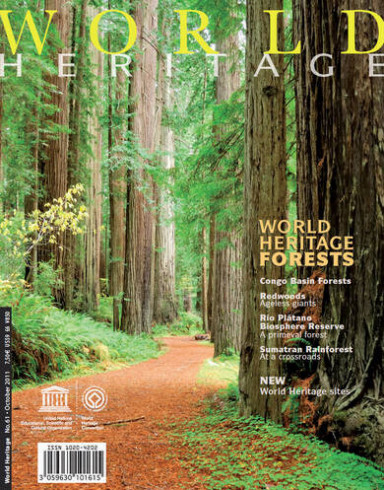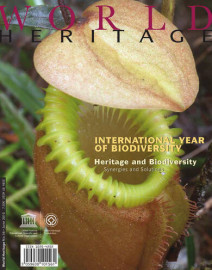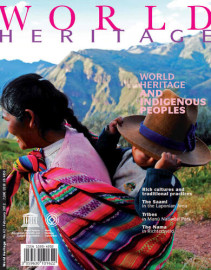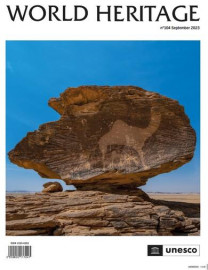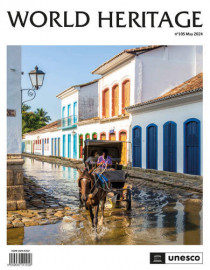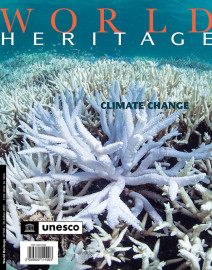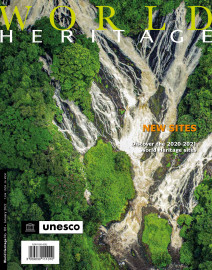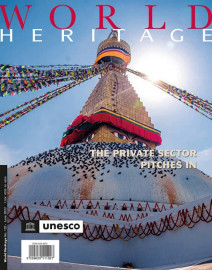DL Services SPRL
Rue Vanderborght 24
1081 Brussels Belgium
info@dl-servi.com
World Heritage Review 61: World Heritage Forests
Available
Forests, like mountains and oceans, play a critical role in the balance of world climate (as well as in vital carbon capture and retention) and thus in the survival of our species, hence the United Nations’ decision to designate 2011 as the International Year of Forests. This event in fact coincides with the tenth anniversary of the World Heritage Forest Programme and justifies our decision to devote a special issue of World Heritage to this crucial subject.
According to the Millennium Ecosystem Assessment (2005), forests occupy about one-third of the Earth’s land surface and are estimated to contain more than half of all terrestrial species, mainly in the tropics. Moreover, forest ecosystems account for over two-thirds of the conversion of solar energy into biomass through photosynthesis – making them a key component of the global carbon cycle and climate. And finally, The Economics of Ecosystems and Biodiversity (TEEB) study of 2010 has estimated that ecosystem services and other non-marketed goods account for between 47 per cent and 89 per cent of the so-called ‘GDP of the poor’ meaning the total source of livelihood of rural and forest-dwelling poor households.
Génération de facture pro forma disponible dans le panier.
But forests are highly vulnerable. The current worldwide population explosion, together with civil unrest and the unregulated exploitation of timber and other assets, are among the major challenges facing world forests today. It has been estimated that simply by halving deforestation rates by 2030 we could significantly reduce annual global greenhouse gas emissions, thereby avoiding damage from climate change estimated at more than US$3.7 trillion in net present value terms. The benefits of protecting tropical forest ecosystems often outweigh the costs. The articles of this issue deal with a number of significant sites worldwide and provide a highly informative overview of the matter.
In the lead article, Ashley DuVal and Peter Crane of the Yale School of Forestry and Environmental Studies examine how the World Heritage Convention highlights the vibrant relationship between the natural and cultural heritage of forests around the world, and how the Convention could contribute to the future of the world’s forests.
And as Conrad Aveling and Guy Debonnet point out, the Congo Basin forests are among the last regions where vast areas of uninterrupted rainforest allow biological processes to continue undisturbed. Some 14 per cent of these regions have been included in various protected areas, and while the diversity of species is high, density is relatively low, as a result of which even the largest of the great parks may not be large enough to ensure long-term conservation. This has led to a policy shift that now favours a ‘landscape approach’, ensuring that gene flows and ecosystem processes are maintained across the landscape.
Keith Bensen’s article on efforts to ensure the conservation of the California redwood is highly instructive, as is Marc Patry’s account of the recent history of the Río Plátano Biosphere Reserve in Honduras, currently facing the intrusion of drug dealers who clear airstrips in the more secluded areas of the park and then use their drug money to clear more parklands for cattle ranching. On the Indonesian island of Sumatra, forest cover is currently diminishing at a rate of 2.5 per cent a year. Less than 40 per cent of the island’s original forests are still standing today. Yet the Tropical Rainforest Heritage of Sumatra provides some hope that not all will be lost. Robert Lee and his co-authors explain the challenges in conserving a World Heritage site in this area.
The World Heritage Forest Programme continues to play a significant role in such matters, as it is the only framework that can request the implementation of appropriate conservation measures and annually monitor the state of conservation of the inscribed sites.



